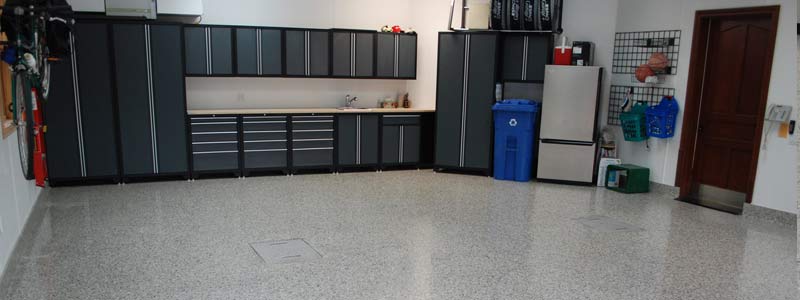Notice: Undefined variable: html in /var/www/vhosts/epoxyflooringfortworth.com/public_html/wp-content/themes/Avada-Child-Theme/functions.php on line 60
Epoxy Floor Covering

Are you finally over your boring, grey, hard concrete garage floors? While they are practical and hold up well, for the most part, they are also pretty plain and come with cracking and deterioration. Now might be a great time to reconsider what you can do with your garage floors, especially if you spend a good bit of time in your garage for hobbies and house projects.
One of the most popular ways to reimagine your garage floors is with epoxy floor coverings. This type of flooring is ideal for busy or heavily trafficked garages, and have a beautiful final aesthetic value. Here is a step by step look at how epoxy can completely transform and modernize your garage floors.
After your floor is clean and dry from etching, prepare your epoxy resin according to the manufactures strict instruction. As you await the resin mix to activate, make sure the edges of your garage are clear or, use painters tape to keep the resin from the walls. Plot your application pattern as you’ll be working section by section to ensure you get a consistent look throughout your garage floor.
You will epoxy the edges of the garage first and then paint the rest of the garage floor in from there. Choose a roughly 3×3 section to work before moving on to the next section. Often, the best application is done with a paint roller. You’ll want to add your speck or extra color applications before you move to the next section.
Most epoxy floor DIY kits suggest waiting 24 to 48 hours before walking or placing items back in the garage. You are giving the product a chance to dry and cure which takes longer than traditional paint. Follow your recommendation from the manufacturer. Also, if you made a mistake or got epoxy on tools, most DIY products are water-soluble. You should be able to clean those up with little effort but do so before the epoxy cures.
This gives you the step by step process of the epoxy floor covering process. With any luck, you better know whether or not you want to tackle this alone or hire the project out. This kind of project requires some patience and prep work but has great results that are worth the effort. Even more, epoxy floors give any house a more polished aesthetic and add value to your home.
